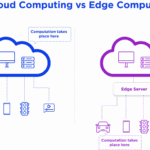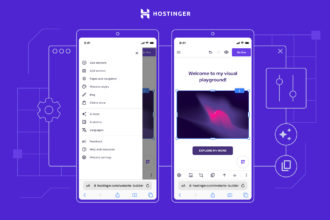Introduction to Low-Code and No-Code Platforms
In the ever-evolving world of technology, coding remains a skill in high demand. Yet, as we venture into 2025, two new players have emerged on the scene: low-code and no-code platforms. These innovative tools are reshaping how software is developed and who gets to do it. Imagine creating applications without diving deep into complex programming languages or spending hours writing lines of code.
As businesses strive for agility and efficiency, these platforms offer an attractive solution that bridges the gap between technical know-how and business needs. But what does this mean for developers? Should they focus their energy on mastering these platforms, or stick with traditional coding practices? Let’s explore the rise of low-code and no-code development together, assess their merits and limitations, and discover what skills will be essential for developers in the near future. The landscape is changing fast; stay ahead of the curve!
The Rise of Low-Code and No-Code Development
Low-code and no-code development have gained remarkable traction in recent years. Businesses are increasingly seeking efficient ways to create software without extensive coding knowledge.
This shift is driven by the demand for faster solutions. Companies want products that can be launched quickly to stay competitive. Low-code platforms allow developers to speed up their workflows, while no-code options empower non-technical users.
The pandemic accelerated this trend as organizations sought remote collaboration tools and digital transformation strategies. Many turned to these platforms to respond swiftly to changing market needs.
Furthermore, the rise of citizen developers has reshaped traditional roles within tech teams. More employees now contribute directly to software projects, enhancing innovation across various sectors.
Investment in low-code and no-code technologies continues to soar as firms recognize their potential for cost reduction and efficiency improvement. The future looks bright for these revolutionary approaches in software development.
Pros and Cons of Low-Code vs. No-Code Platforms
Low-code platforms offer flexibility for developers. They allow customization through coding. This means you can build complex applications tailored to specific needs. However, the learning curve might not suit everyone.
On the other hand, no-code platforms excel in accessibility. Users without a programming background can create functional applications easily. This democratizes software development but may limit advanced features and integrations.
Both options speed up project delivery time significantly. Low-code appeals to tech-savvy teams looking for power and control, while no-code attracts business users aiming for quick solutions.
Yet, reliance on visual interfaces can lead to oversimplified designs or missed optimization opportunities in both approaches. It’s essential to weigh these factors when choosing between low-code and no-code solutions based on your project’s goals and team capabilities.
What Should Developers Learn in 2025?
As we approach 2025, developers must adapt to the evolving landscape of technology. The demand for low-code and no-code platforms continues to surge, making it essential for developers to familiarize themselves with these tools.
Understanding basic principles behind low-code development will enhance a developer’s ability to collaborate with non-technical teams. This skill bridges gaps and fosters innovation.
On the other hand, diving into no-code solutions allows developers to create applications rapidly. It empowers them to focus on problem-solving rather than getting bogged down by complex coding tasks.
Moreover, integrating AI and machine learning is becoming increasingly important. Developers who grasp how these technologies can complement low-code or no-code platforms will have a competitive edge.
Continuous learning through online courses or community events ensures that skills remain relevant. Embracing change now sets the stage for future success in an ever-evolving tech environment.
Advantages of Learning Both Low-Code and No-Code Development
Learning both low-code and no-code development opens doors to a diverse range of opportunities. As technology continues to evolve, understanding these platforms enables developers to adapt swiftly.
Low-code environments allow for deeper customization and integration with existing systems. This skill is invaluable when building complex applications that require robust backend functionality.
On the other hand, no-code tools empower individuals without extensive technical knowledge to create functional software solutions. Embracing this aspect can enhance collaboration between technical and non-technical teams.
Combining expertise in both areas fosters creativity and innovation. Developers can streamline workflows while also experimenting with rapid prototyping techniques.
This dual proficiency not only makes one more marketable but also enhances problem-solving capabilities across various projects. In an ever-changing tech landscape, being versatile sets you apart from the competition.
Real-Life Applications and Success Stories
Real-life applications of low-code and no-code platforms are reshaping industries across the board. Companies like Netflix and AirAsia have embraced these technologies to streamline their operations. For instance, Netflix utilized low-code tools to develop internal applications that support their data-driven culture. This has allowed them to respond quickly to market changes while maintaining a high-quality user experience.
AirAsia leveraged no-code solutions for ticketing systems, drastically reducing development costs and time-to-market. By enabling non-technical staff to create dashboards and manage workflows, they improved efficiency without sacrificing service quality.
In healthcare, organizations are using these platforms for patient management systems that require rapid deployment due to changing regulations or urgent needs. The ability of medical professionals with limited coding knowledge to build functional applications is transforming patient care processes.
Moreover, educational institutions are adopting low-code platforms for administrative tasks such as enrollment management and course registration, making it easier for them to adapt in a fast-evolving environment.
As businesses increasingly turn toward digital transformation strategies, the importance of both low-code and no-code development will continue growing. From startups seeking agility in product launches to established corporations needing innovative ways around legacy systems—these tools offer flexibility that meets diverse needs in today’s technology landscape.
With countless success stories emerging across various sectors, it’s clear that mastering both approaches not only prepares developers for future opportunities but also positions companies at the forefront of innovation within software development.










